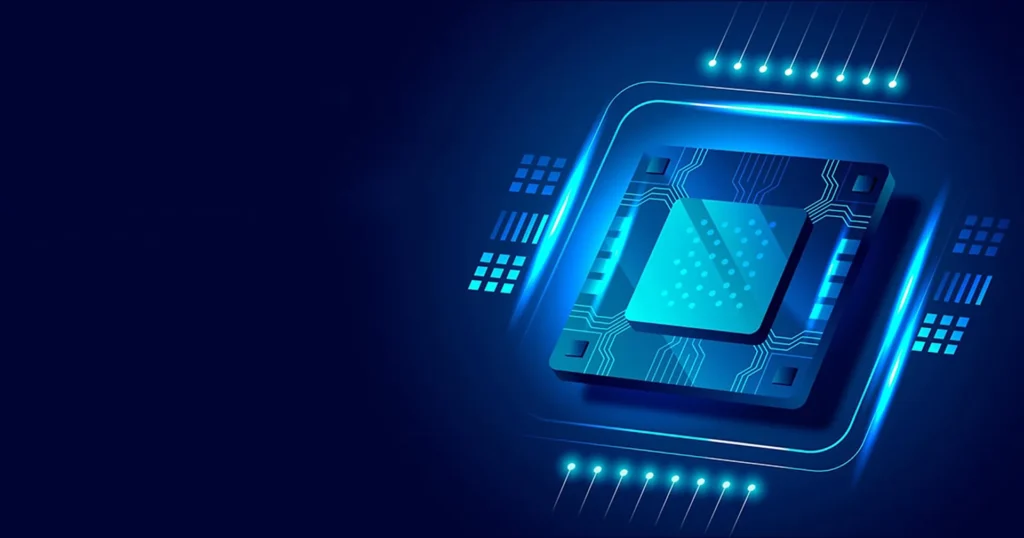What is SoC (System-on-Chip)?
A System-on-Chip (SoC) is an integrated circuit (IC) that consolidates all major components of a computing system into a single chip. It includes the CPU, GPU, RAM, storage controllers, modem, and other essential components, making it the heart of modern smartphones, tablets, and embedded devices.

Understanding System-on-Chip (SoC)
The traditional computing model consists of separate components, such as a standalone CPU, GPU, and memory modules, which communicate via a motherboard. In contrast, an SoC integrates all these components onto a single chip, reducing power consumption, increasing efficiency, and improving performance.
Key Components of an SoC
A modern SoC consists of several key modules:
- CPU (Central Processing Unit): The primary processing unit responsible for executing instructions and running applications.
- GPU (Graphics Processing Unit): Handles graphical computations, essential for gaming, UI rendering, and AI-based image processing.
- RAM (Random Access Memory): Integrated memory controller that manages system memory for smooth multitasking.
- ISP (Image Signal Processor): Dedicated hardware for processing images and videos captured by the camera.
- DSP (Digital Signal Processor): Optimized for signal processing tasks such as audio enhancements, voice recognition, and sensor data processing.
- AI Engine / NPU (Neural Processing Unit): Accelerates machine learning tasks such as AI-based camera enhancements, speech recognition, and computational photography.
- Modem (4G/5G Connectivity): Handles cellular communication, including LTE and 5G networking.
- Wi-Fi & Bluetooth: Integrated wireless communication modules for seamless connectivity.
- Security Module (TPU, Secure Enclave, Titan M): Ensures data encryption and device security.
- Power Management Unit (PMU): Regulates power consumption and optimizes battery efficiency.
Advantages of SoC
The adoption of SoC technology has brought numerous advantages to modern devices:
- Energy Efficiency: SoCs are designed with low power consumption in mind, significantly improving battery life in mobile devices.
- Compact Design: By integrating multiple components into a single chip, SoCs enable thinner and lighter devices.
- Higher Performance: Optimized interconnects within an SoC provide faster data transfer and improved efficiency.
- Cost-Effective: Manufacturing a single chip with multiple functions reduces production costs.
- Thermal Management: Integrated components lead to better heat dissipation and cooling efficiency.
Popular SoC Manufacturers
Several companies design and manufacture SoCs for different device categories:
- Qualcomm Snapdragon: Widely used in Android smartphones, featuring high-performance CPUs and AI capabilities.
- Apple A-series & M-series: Apple’s in-house SoCs, known for their powerful performance in iPhones, iPads, and MacBooks.
- MediaTek Dimensity & Helio: Provides cost-effective yet powerful SoCs for mid-range and flagship smartphones.
- Samsung Exynos: Samsung’s own line of SoCs found in Galaxy smartphones.
- Google Tensor: Optimized for AI-driven performance in Google Pixel devices.
- HiSilicon Kirin (Huawei): Huawei’s proprietary SoCs designed for its own devices.
SoC Architecture & Process Nodes
SoCs are fabricated using different semiconductor process technologies, measured in nanometers (nm). Smaller process nodes lead to better efficiency and performance. Common process nodes include:
| Process Node | Manufacturers | Example SoCs |
|---|---|---|
| 3nm | TSMC, Samsung | Apple A17 Pro, Exynos 2400 |
| 4nm | TSMC, Samsung | Snapdragon 8 Gen 2, MediaTek Dimensity 9200 |
| 5nm | TSMC | Apple A15 Bionic, Exynos 2100 |
| 7nm | TSMC, Samsung | Snapdragon 865, Kirin 990 |
Future of SoC Technology
SoC technology continues to evolve, with major innovations on the horizon:
- 3nm and 2nm Process Nodes: Future chips will be even smaller and more power-efficient.
- Integration of AI & Machine Learning: AI-driven enhancements in performance, power efficiency, and image processing.
- Heterogeneous Computing: Combining multiple specialized processing units for optimal performance.
- Advanced Cooling Mechanisms: Improved thermal management to sustain peak performance.
Conclusion
System-on-Chip (SoC) technology has transformed the mobile industry by integrating all essential computing components into a single, power-efficient package. As semiconductor technology advances, SoCs will continue to evolve, providing more powerful, efficient, and intelligent devices.
